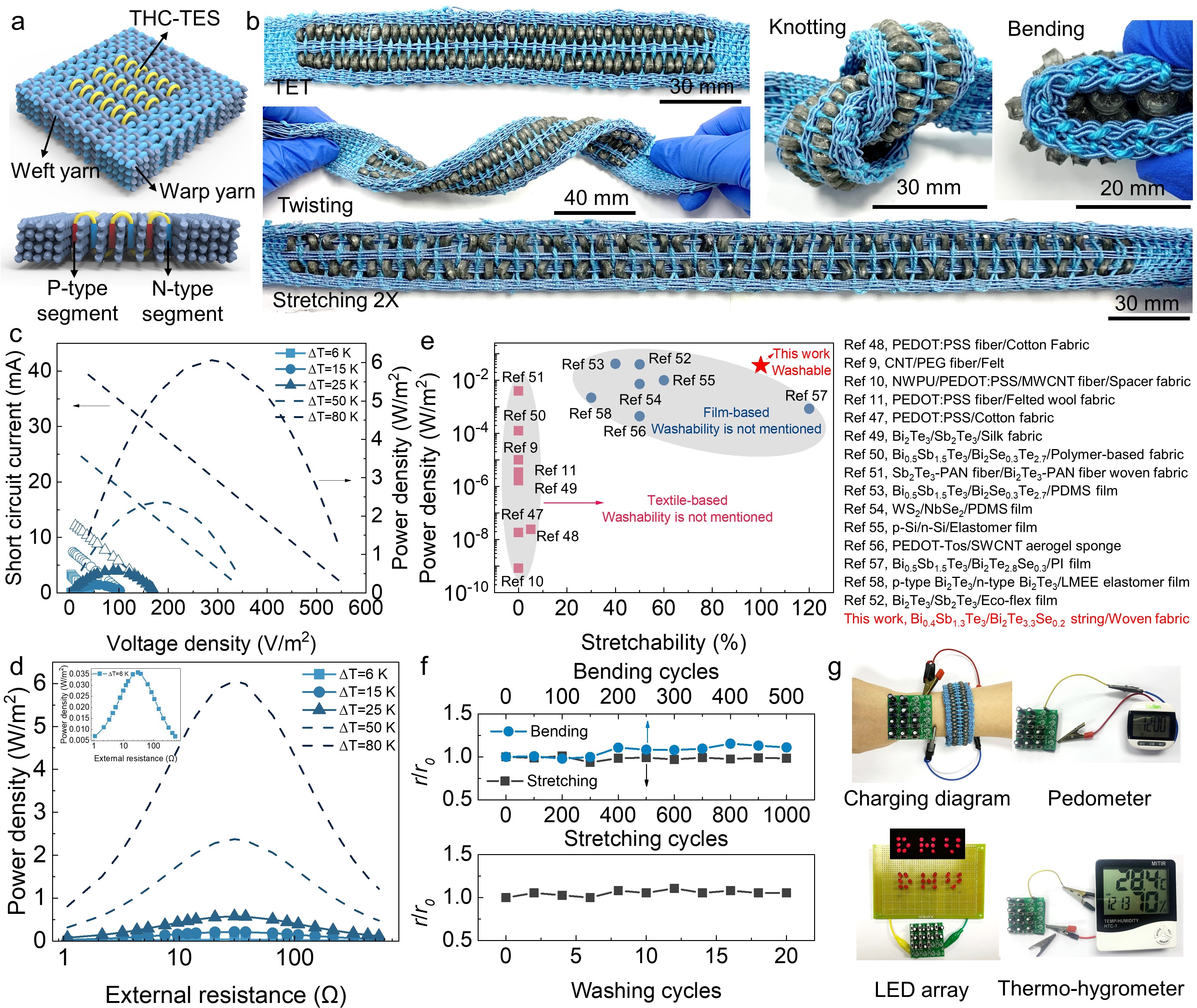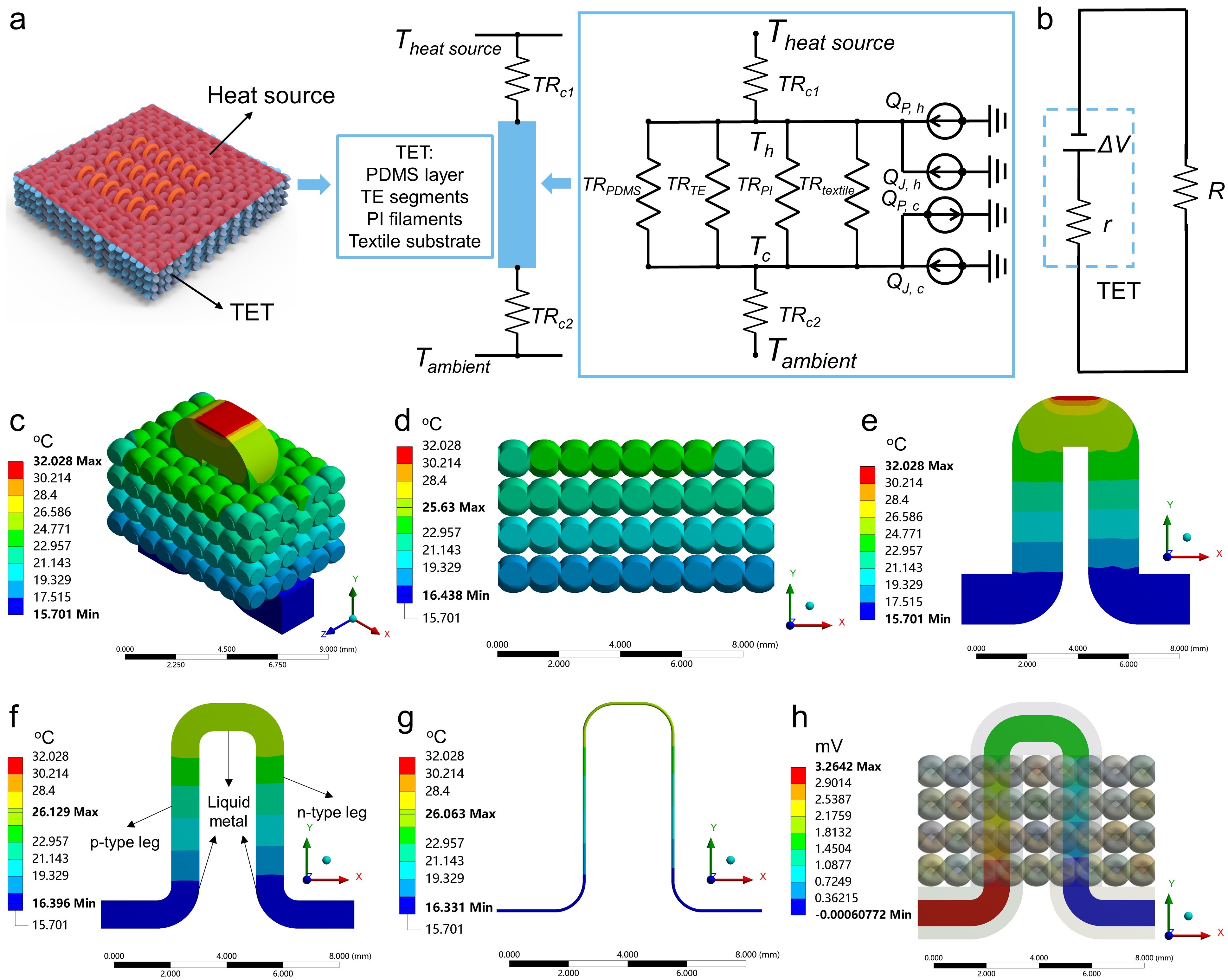Zhang Kun’s S.M.A.R.T. team from DHU College of Textiles recently made new progress in flexible inorganic semiconductor-based thermoelectric textiles together with Zhao Huai Zhou’s research team at the Institute of Physics, Chinese Academy of Sciences, Zhang Ting’s research team at the Institute of Engineering Thermophysics, Chinese Academy of Sciences, and Professor Jeffrey Snyder at Northwestern University, USA. The research result “Durable, stretchable and washable inorganic semiconductor-based woven thermoelectric textiles for power generation and solid-state cooling” was published in Energy & Environmental Science, a journal of the Royal Society of Chemistry (Impact Factor: 38.532). Zheng Yuanyuan, a Ph.D. student in the School of Textiles, Donghua University, is the first author, researcher Zhang Kun is the corresponding author, and associate researcher Li Guodong, Institute of Physics, Chinese Academy of Sciences, is the co-corresponding author.

Preparation of thermoelectric fabric and characterization of power generation performance

Thermoelectric transfer process in thermoelectric fabrics
Flexible thermoelectric devices are an important complementary technology compared to other types of flexible energy conversion technologies. It has the features of all-weather operation, no moving parts, small internal resistance, DC output, etc. It also has the functions of temperature regulation and temperature sensing and can continuously power most wearable electronic devices used in the Internet of Things. Compared with two-dimensional flexible thermoelectric devices, three-dimensional textile structured thermoelectric devices (referred to as thermoelectric fabrics) woven from thermoelectric yarns have unique advantages, including in-plane energy conversion, three-dimensional deformation and conformability, and wearing comfort. Therefore, the organic combination of textile structure and thermoelectric technology to develop flexible thermoelectric yarns and fabrics is one of the important research directions.
